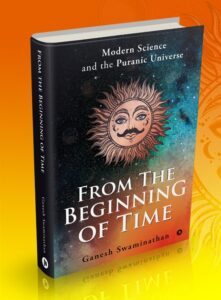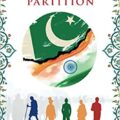To comment or receive more such wisdom, please register on www.gyanalogy.com/login

I started reading the Puranas some eight years ago. It began with a conversation with a friend, who told me he was reading an Egyptian version of the flood story of Noah and the Ark. I said to him that there was possibly an Indian version, the Matsya Purana, but that I had not read it. We decided I would read the Matsya Purana, and he the Epic of Gilgamesh and that we would later meet to compare notes. I went on to order my copy of the Matsya Purana and so began my journey through the Puranic texts.
I had little idea of what to expect, maybe some stories of the divinities that had an underlying moral. What I found instead was a text of great sophistication, especially for a text considered to be about 2,000 years old. At this time, I had no inkling that I would go on to write a book. My primary intent was to get an appreciation for this body of work that is a part of our ancient texts but does not get discussed very much.
I went on to read the Shiva Purana and the Bhagavata Purana. It was hard to get good imprints of the other texts. There were some PDFs of older publications on the internet, now out of print. I downloaded and printed them, and so went on to read the Brahmanda, Kalika, and the Devi Purana.
I had been fascinated by space science since school and had kept abreast of some of the concepts by reading books and articles, watching videos on YouTube and listening to podcasts. I was fascinated by the detail relating to the Sun and the Moon in the Puranic texts. As I read my fourth Purana, I realized there was a lot of similarity to space science that could not be brushed aside as just happenstance.
About this time, I began to take copious notes of my observations of the Puranas. I was still working full time at my job, but the outlines of a book were starting to take shape. When I took a break from my corporate life, these notes became the source material for a book.
My background in printing was useful in a strange way. The last three Puranas I read were downloaded from the internet, printed and read. I felt comfortable enough to do so on my desktop printer at a relatively low cost! My background also gave me an appreciation for the Print-on-Demand technologies that on-line sellers of books use. Other than that, I must admit, not much.
The Puranas are encyclopedic in nature and have a lot of information. It is essential that the book does not attempt to reflect all that the Puranas contain, but only what could constitute a clear storyline that a lay reader could follow. I am sure my experience with ‘WAC’ Written Analysis and Communication has helped me stay focused on this storyline and aggressively weed out anything that does not belong. The IIM experience also allows us to structure large amounts of material so that they can be broken up, discussed and delivered in bite-size chunks.
My advice to budding writers and the first-time authors, there are many that need to write; it is in their DNA. It is their way of finding expression from the narrow confines of corporate life. To them, I say, go for it.
It is not evident that writing would compare financially with the salaries and benefits of the corporate world. That said, there are people such as Amish Tripathi that have been very successful, but such examples are few.
For me, it was a combination of circumstances that led me to write this book. But I guess each of us has his or her own sequence of events that gets them to write a book, or for that matter, do anything significantly different from taking the beaten path.
Being a first-time writer and tackling a complex topic as the Puranas was a daunting task. There was no scope for ‘making up’ a storyline as one might choose to do while writing fiction. More importantly, this is a sacred text, which calls for sensitivity in the presentation.
While I had little experience in writing a book, I had been a voracious reader. It was painfully evident to me that I myself would not spend much time reading my own early drafts. Leave aside, trying to convince other people to pay good money for it. But while I realized that my writing was not up to the mark, I had no training or template to tell me what needed to be fixed. As a result, I just kept rewriting till I felt it was acceptable. That was really hard, and I am guessing there must be a better way to go about this.
Another interesting aspect was that about a third of the book became apparent as I went about writing the book and researching my observations. And as the insights grew, it was indeed a sense of discovery about the Puranic texts and a feeling of wonder at what they were able to describe.
The past couple of decades have exposed me to two major financial crises, the dot com bubble of 2000 and the Lehman moment of 2007. The takeaway for me was that one needs resilience and equanimity to reorient one’s course of action in such situations. Being swept away in the emotion of the moment does not seem to help very much.
Not much to wish that I knew something earlier in my life! Making mistakes is a part of being twenty-something. Besides, if you ‘know’ too much, you might never go out on a limb and know what you could have achieved! I am reminded of the story of the bumblebee. According to the story, as per the principles of aerodynamics, the bumblebee, because of the shape of its body, should be incapable of flight. The bumblebee, fortunately, is untrained in aerodynamics and just flies anyway!
The writing of this book represented a phase in my life that was all-consuming. Now that the book is done, I need to ‘come up for air’ and figure out what next.
In brief, to be happy is to be fulfilled in what one wants to accomplish. And this changes over time. It is really hard to define happiness in short! It would be easy to write a whole book on this topic.
More importantly, each of us is a son (or daughter), spouse, parent, relative, friend and member of society. All of these aspects need to be in harmony with our spiritual selves. So, trying to fixate on this too much might be challenging.
The book is not a ‘story.’ It is an attempt to recreate the Universe as imagined by the writers of the Puranas. In the process, the book uncovers that they might have been surprisingly close to what modern science suggests.
Our generation has been trained and has, in turn, trained our children to be rational. This emphasis on rationality takes us away from the ancient texts that have relied on faith for their acceptance. My attempt with this book is to encourage readers to re-engage with the Purana Samhita and explore it using the lens of science and rationality.
 Ganesh Swaminathan is an engineer from IIT Delhi. He has had an interest in space science ever since he was in school. After completing his MBA from IIM Ahmedabad, he spent most of his professional life in a multinational organization in the field of technology. About eight years ago, Ganesh developed an interest in the Puranas. He was fascinated by the insights the ancient text offered, particularly the parallels to space science. He has researched most of the Mahapuranas, besides other texts, in preparation for writing this book. His book From the Beginning of Time is now available to order.
Ganesh Swaminathan is an engineer from IIT Delhi. He has had an interest in space science ever since he was in school. After completing his MBA from IIM Ahmedabad, he spent most of his professional life in a multinational organization in the field of technology. About eight years ago, Ganesh developed an interest in the Puranas. He was fascinated by the insights the ancient text offered, particularly the parallels to space science. He has researched most of the Mahapuranas, besides other texts, in preparation for writing this book. His book From the Beginning of Time is now available to order.
Ganesh currently lives in Singapore with his wife and daughter.
To comment or receive more such wisdom, please register on www.gyanalogy.com



